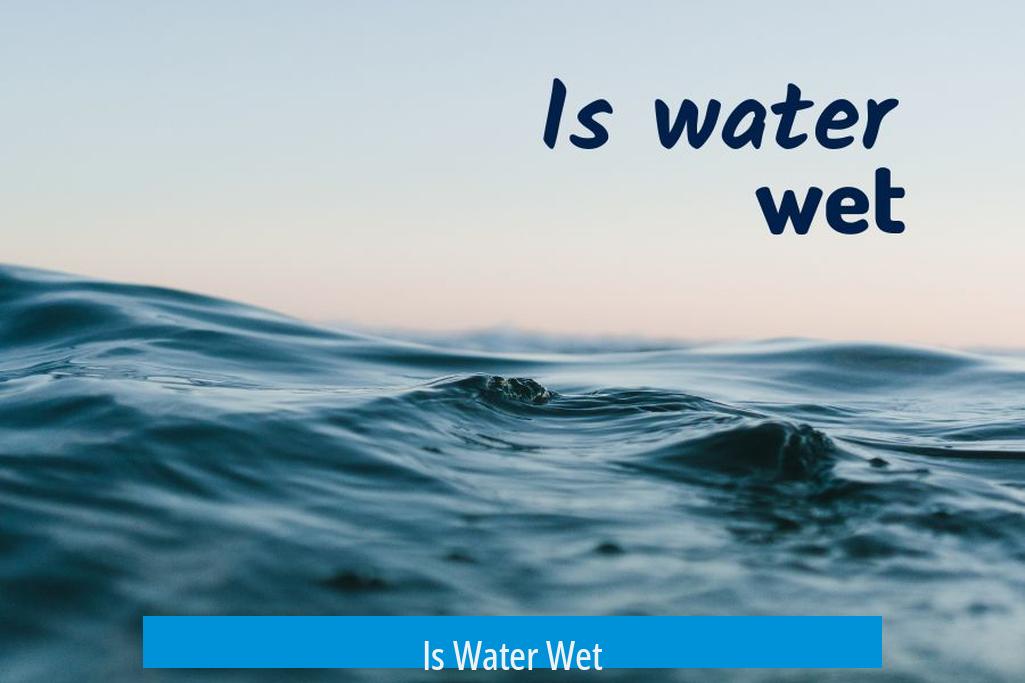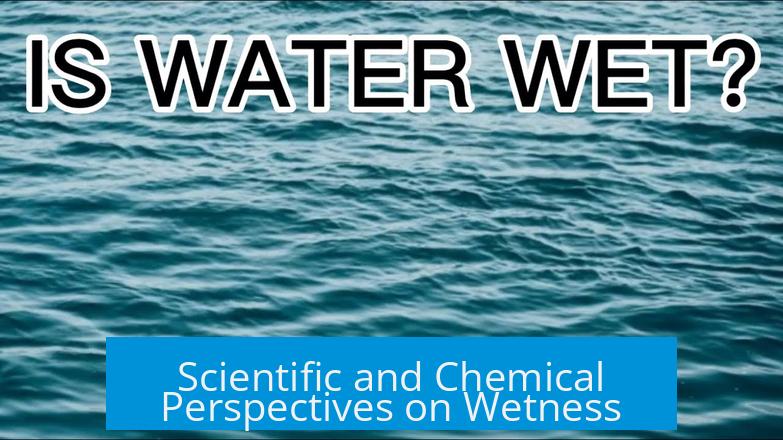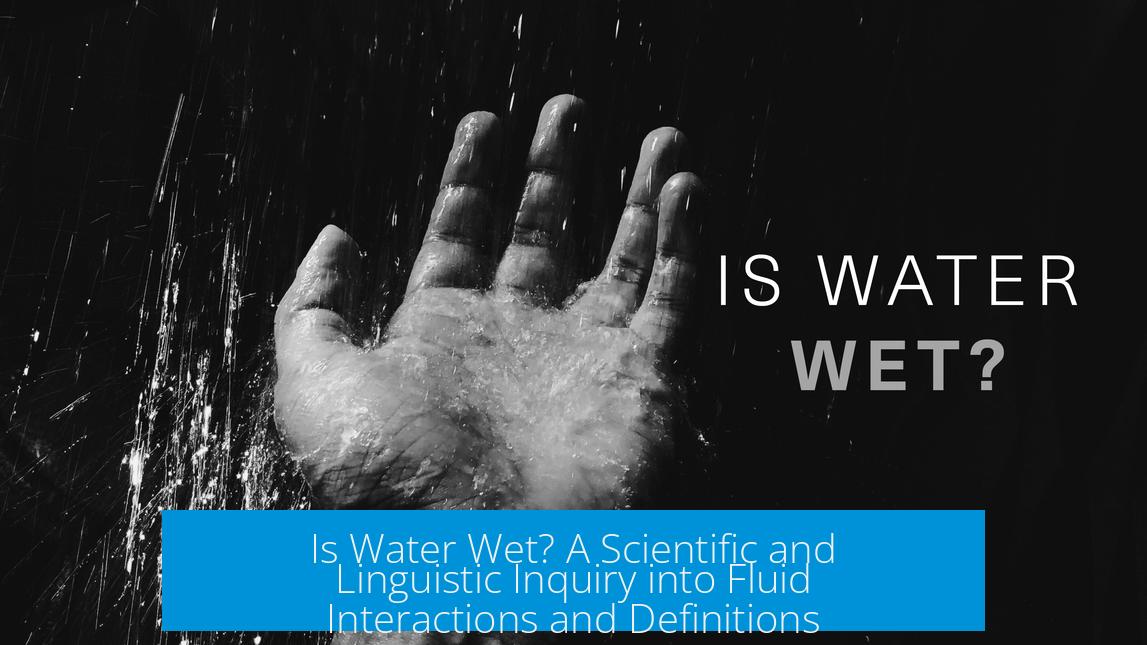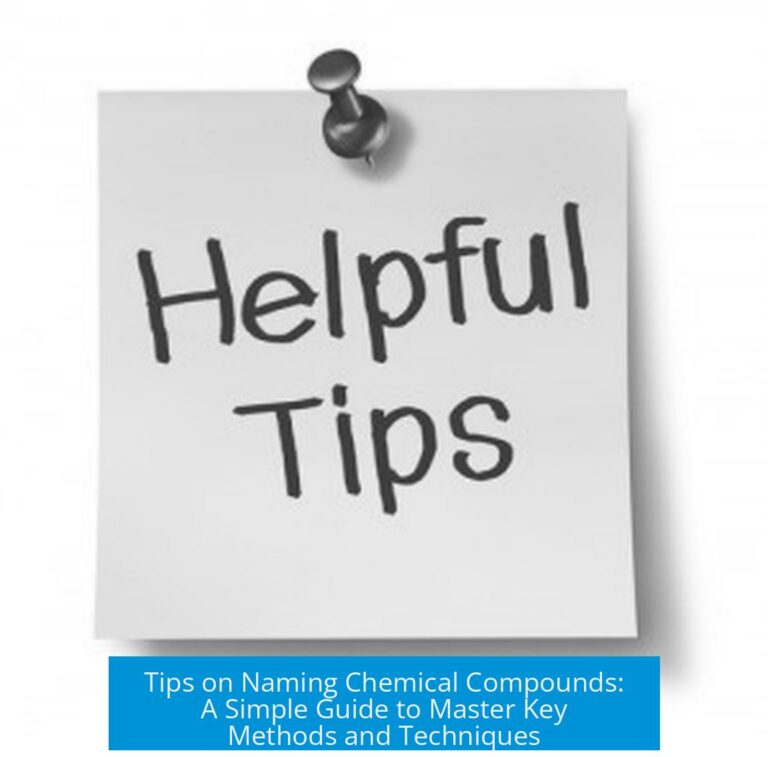Is Water Wet?

Water is wet in the sense that it makes other materials wet, but water itself is not wet as a standalone substance. Wetness is a property of the interaction between a liquid and a solid surface, not an intrinsic property of the liquid alone.
Understanding Wetness from Fluid-Surface Interaction
Wetness often relates to how a liquid interacts with a surface. From a practical standpoint, such as in heat transfer, wetness describes the extent to which a fluid contacts and adheres to a solid surface. For example, a water droplet on a hydrophobic surface does not effectively “wet” that surface because it forms beads rather than spreading out. Conversely, water on dry paper will spread and be considered wetting the paper.
In engineering terms, ensuring proper wetting helps maximize heat exchange efficiency by increasing contact area between fluid and surface. Poor wetting reduces heat transfer efficiency. This shows that wetness depends on the fluid and the surface it contacts, not just the liquid alone.
Scientific and Chemical Perspectives on Wetness

Scientifically, “wet” is not a precisely defined chemical term. Chemists generally describe wetness as the presence of water or moisture on a substance. From this angle, anything containing water is wet. Therefore, since water contains H2O molecules, it can be considered wet.
However, many scientists argue wetness is an emergent property. It manifests when a liquid (such as water) contacts a solid surface. Some define wetness strictly as a state possessed by solids when covered by liquid. For instance:
- Wetness requires two components: a liquid and a solid.
- Water alone, being a liquid, cannot be wet because wetness describes the liquid-solid interaction.
Thus, water makes other materials wet but is not wet itself under this definition.
Conceptual and Linguistic Considerations
Linguistically, people use “wet” to mean “covered with water” or “containing moisture.” When fabric has water on it, it is called wet because water molecules attach to the surface through electrostatic forces and surface tension.
Water molecules also attract each other strongly through hydrogen bonding. This cohesion means water is a liquid capable of making other materials wet. But does that mean water itself is wet?
- Water in isolation cannot be dry or wet; the concept applies to other objects touched by water.
- Water vapor, or steam, is water in gaseous form and lacks surface tension, often considered “dry.”
Hence, calling water “wet” can depend on perspective. Humans perceive water as wet since it can soak and cover surfaces. Science may treat wetness as a property of solids. Most lay discussions accept the intuitive view that water is wet because it causes wetness.
Linguistic and Semantic Nature of the Question
The debate over whether water is wet is largely linguistic rather than scientific. “Wet” describes a condition involving water or another liquid but lacks a universal scientific definition.
Using common language:
- To dry something, use a dry towel.
- To wet something, apply water or another liquid.
- Thus, water is synonymous with wetness.
Arguing that water is not wet due to technical distinctions often ignores everyday usage. Water is inherently “wet” in common speech because it consists of liquid molecules and can wet other surfaces.
Some analogies used:
- Water is wet, just as fire is hot.
- Saying water isn’t wet is like saying dirt isn’t dirty.
Additional Nuances and Scientific Details
Wetness may seem quantifiable. Pouring more water onto pants clearly makes them wetter. But water itself lacks gradations of wetness; it is a liquid in liquid form, so the concept of wetter water does not apply.
Regarding phase changes:
- Ice is solid water and can be wet if covered by liquid water.
- Steam is gaseous water, lacking surface tension, thus often called dry.
Fluids differ in wetting abilities. For instance, mercury does not wet many solids and forms droplets. This highlights how fluid-surface interactions govern wetness.
Molecularly, water molecules stick to each other via polar forces. This cohesion causes surface tension, a factor in wetting. Water’s unique molecular interactions allow it to adhere to many solids.
Summary of Key Points
- Wetness describes the interaction of liquid on a solid surface, not a property of the liquid itself.
- From a scientific perspective, water is not wet but causes wetness.
- Linguistically and practically, water is often described as wet because it contains liquid molecules and wets things.
- Wetness depends on both the fluid and the surface properties, such as hydrophobicity.
- Water’s molecular cohesion through hydrogen bonding influences surface tension and wetness behavior.
- Phase states affect wetness perception: steam (gas) is dry; liquid water is wetting.
- Questions about water’s wetness are often semantic rather than scientific.





Leave a Comment